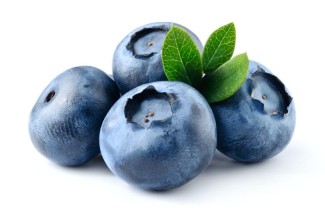
As a dietitian I like to follow food and diet trends to see what is popular because it helps me understand what people are hearing about and trying. During the past few years counting “macros” or macronutrients became popular. Macronutrients refers to the nutrients that our bodies need in larger quantities and provide the bulk of calories in our diet. The three primary macronutrients are carbohydrates, protein, and fat. There are also micronutrients which our bodies need in smaller amounts, hence the “micro”. Vitamins and minerals are micronutrients.
Lately I have seen more interest and talk about mesonutrients. Meso means “middle” and refers to in-between nutrients. In between what you ask? Mesonutrients are the active compounds found in food and are responsible for some of the amazing health benefits of your favorite superfoods. They aren’t macro or micronutrients so they are referred to as “middle” nutrients.
One example of a mesonutrient is found in turmeric. Turmeric is well known for its anti-inflammatory and antioxidant effects on the body. However, it isn’t the turmeric that is responsible for these effects. The active compound curcumin, within the turmeric, is what packs a nutritional punch and would be referred to as a mesonutrient.
Another example of a mesonutrient is found in green tea. The active compound within green tea called epigallocatechin gallate, commonly referred to as EGCG, would also be considered a mesonutrient. EGCG is an anti-oxidant that may help the body fight chronic disease that is caused by oxidative stress.
If you start to hear people discussing mesonutrients, often they are talking about “meso-dosing” or taking supplements to get the maximum amount of health benefits found in these compounds. Always talk to your physician before starting any supplement. My recommendation would be to find food sources that provide the health benefits of these compounds. First, focus on eating a healthy diet that incorporates a variety of foods that provide these active compounds on a daily basis. You receive the amazing health benefits without the worry of taking too much of a supplement or interactions with other medications you may take.
Here are a few food items and spices that are high in active compounds that you can start incorporating in your diet on a daily basis. Foods such as beans, fruits, vegetables, nuts/seeds, and herbs, and spices each have distinctive nutrient profiles. Variety is key!
Matcha Salad Dressing
- 1 Tbsp. lemon juice
- ½ Tbsp. white miso
- 1 tsp extra virgin olive oil
- ½ tsp rice vinegar
- ¼ tsp matcha tea
- Salt and pepper to taste
Whisk all of the ingredients together and drizzle over your favorite salad.
Green tea (EGCG) - Iced green tea is refreshing on a hot day or hot green tea is a great beverage to start your day. Matcha (ground green tea leaves) can be used in sweet or savory recipes. Add matcha to fresh fruit smoothies or as a savory addition to homemade salad dressing. Top kale or spinach salad with colorful veggies, tofu, or beans and matcha salad dressing for additional benefits.
Turmeric (Curcumin) - Make hot or cold tea from the root and add some lemon slices. Try turmeric in curry or flavor roasted vegetables like cauliflower with turmeric.
Blueberries (Anthocyanins) – Fresh blueberries make a quick and easy snack. You can also add blueberries to your favorite breakfast dish like oatmeal, cold cereal, or granola with yogurt.
It is always interesting to see the latest nutrition trends and what draws people to follow them. Meso-nutrients, the active compounds in foods, can provide many health benefits. For safe and effective benefits, eat a variety of healthy foods on a daily basis to incorporate these active compounds in your diet.